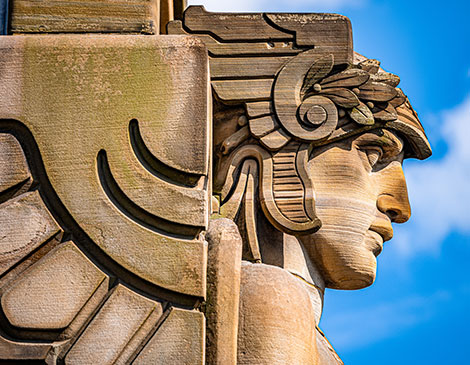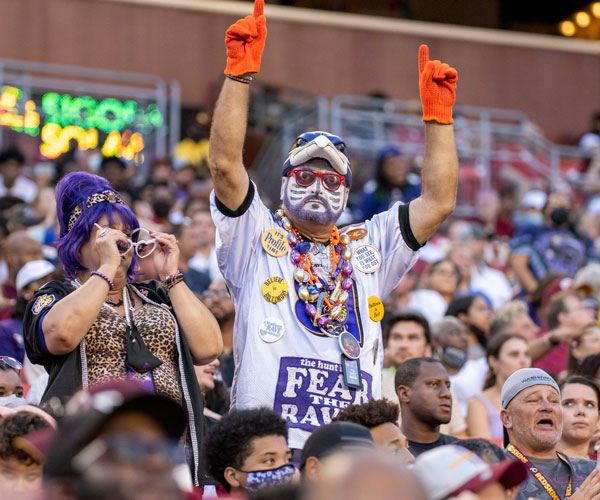Each guardian holds a different vehicle in his hand, representing the history of ground transport — from a stagecoach, covered wagon and hay rack to a 1930s-era automobile and four types of trucks. “Great care was taken to obtain a pleasing architectural creation,” wrote Watson, “demanded by a public that is becoming more and more critical in this regard.”
Voters approved the money to build the bridge in 1927, before the Depression forced a return to frugal simplicity in public construction. Still, the bridge came in under budget, at $6.5 million (or around $90 million in today’s dollars). The figures are carved from 43-foot-tall slabs of local Berea sandstone.
Henry Hering of New York City was hired as the sculptor, but the Art Deco style of the bridge was not typical of his work.
Watson credited Frank Walker of Walker & Weeks, Cleveland’s premier architectural firm of the time, with the guardians’ design. Watson explained what the guardians symbolized, but not what had inspired them. Here are the best clues to Walker’s influences.
1. The angular parallel lines that run behind and below the Guardians mark the statues as Art Deco, the sleek modern style of the late 1920s and 1930s. The Guardians of Traffic are Cleveland’s only large Art Deco monuments.
2. The wings on the helmets suggest who they may be modeled after: Hermes, the messenger of the gods and the god of commerce and land travel in Greek mythology. Also known as Mercury by the Romans, he was often depicted with a winged helmet to signify his speed.
3. Some observers see Egyptian influence in the statues. Egyptian Revival styles were popular in the 1920s, thanks to the 1922 discovery of King Tut’s tomb and the Art Deco movement’s embrace of stylized figures.
4. The wings of the guardians, which wrap around the pylons, have reminded one historian of the guardian statues at Assyrian kings’ palaces. The Assyrian guardians were part man, part winged bull, and their wings also stretched back along the square sides of the statutes. Like the bridge guardians, the winged bulls were placed in pairs and offered protection to those who passed between them.
5. Each guardian holds a different vehicle . An early sketch of from the Walker & Weeks firm shows a guardian holding a car and includes a list titled “Motifs of Locomotion,” which included: “The Horse and Wagon,” “The Ship,” “The Motor Car” and “The Aircraft.” The designers later chose to leave out the horse, ship and plane and give all the Guardians ground vehicles.
Editor’s Note: This article was originally published in 2009 as part of our “Icons of Cleveland” package.




